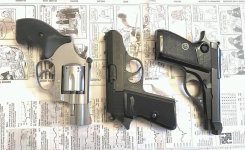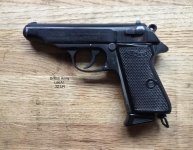Having pretty much given up with other gun boards, I thought I’d fly this subject by the knowledgeable folks here at S&W Forum.
For some reason, while watching the funeral of Queen Elizabeth II, I was reminded of the attempted kidnapping of Princess Anne in 1974. The princess’ bodyguard was armed with a Walther PPK. When he tried to stop the kidnapper, the Walther jammed. After this incident, and apparently because of it, the PPK was replaced.
I’ve done a web search on the incident, looking for details and finding none except what I’ve related. I’m curious as to what calibre the gun was; I think the Metropolitan Police issued .380ACP. Also, was the cause of the jam reported – ammo, magazine, dirty pistol(!), user error (!!)? Finally, what pistol replaced the Walther and what calibre? I read in a novel that the H&K4 was used by some British authorities, but this may be pure fiction. I can’t find any references to the H&K being issued in Britain.
I know the S&W licensed Walthers had serious issues, but haven’t heard of problems with the original guns. My only experience with the breed was an ancient and well worn PPK in .32ACP (of course). It was dead reliable and a pleasure to shoot with ball ammo.
For some reason, while watching the funeral of Queen Elizabeth II, I was reminded of the attempted kidnapping of Princess Anne in 1974. The princess’ bodyguard was armed with a Walther PPK. When he tried to stop the kidnapper, the Walther jammed. After this incident, and apparently because of it, the PPK was replaced.
I’ve done a web search on the incident, looking for details and finding none except what I’ve related. I’m curious as to what calibre the gun was; I think the Metropolitan Police issued .380ACP. Also, was the cause of the jam reported – ammo, magazine, dirty pistol(!), user error (!!)? Finally, what pistol replaced the Walther and what calibre? I read in a novel that the H&K4 was used by some British authorities, but this may be pure fiction. I can’t find any references to the H&K being issued in Britain.
I know the S&W licensed Walthers had serious issues, but haven’t heard of problems with the original guns. My only experience with the breed was an ancient and well worn PPK in .32ACP (of course). It was dead reliable and a pleasure to shoot with ball ammo.



